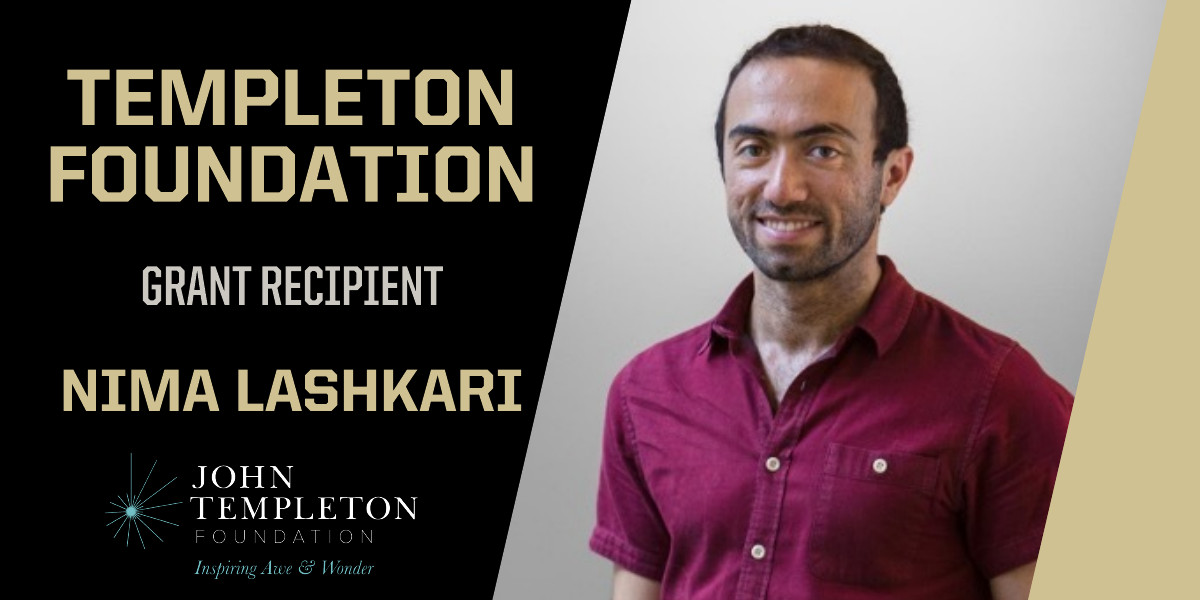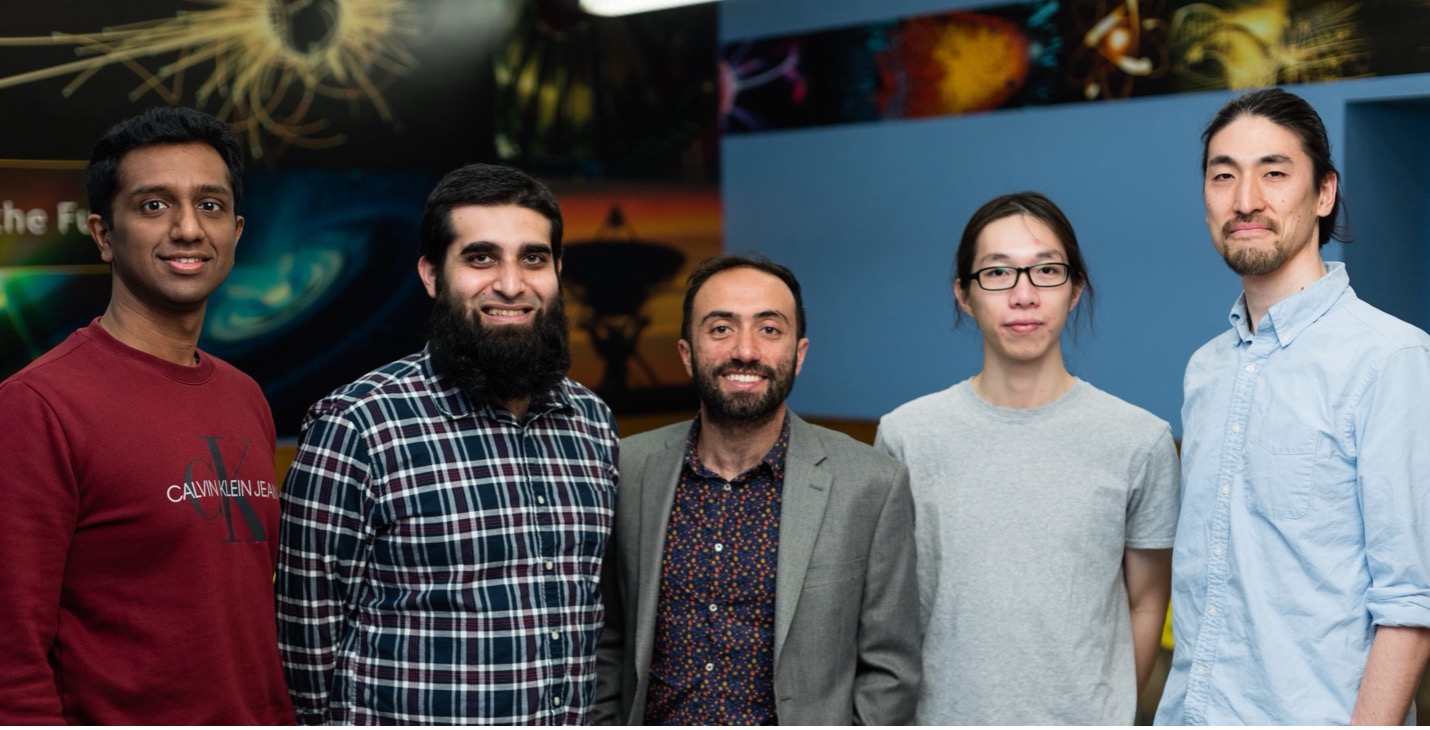Nima Lashkari awarded Templeton Foundation grant to study how time emerges from quantum chaos
2025-07-24

Nima Lashkari, an assistant professor of physics at Purdue University, has been awarded a $1.5 million grant from the John Templeton Foundation to explore how time might emerge from chaotic quantum systems.
Lashkari serves as the lead principal investigator and will receive $390,000 of the funding. The project runs from September 2025 through August 2028 and includes collaborators Hong Liu, a physicist at the Massachusetts Institute of Technology; Sebastian de Haro, a philosopher and physicist at the University of Amsterdam; and Richard Dawid, a philosopher at Stockholm University. Lashkari notes that this project is deeply theoretical, yet it relies on close collaboration across multiple institutions.
The project, titled "Emergence of Time from Chaos in Operator Algebras," brings together experts in quantum gravity, operator algebras and the philosophy of physics to tackle fundamental questions about time, spacetime and the laws of nature.
"While time is one of the most familiar yet mysterious dimensions of our existence, recent insights from quantum gravity reveal it may not be as fundamental as we think," Lashkari said.
The research will explore how chaotic behavior within operator algebras can give rise to our experience of time and spacetime symmetries, with applications ranging from black hole physics to holographic theories.
"A novel collaboration between theoretical physicists and philosophers of science is made possible by a common rigorous mathematical language called operator algebras," Lashkari said. Operator algebras are a branch of mathematics that studies algebras of linear operators, often on infinite-dimensional vector spaces.
The interdisciplinary project includes three components:
- Exploring how chaos in operator algebras generates concepts of time, with implications for black hole physics and holographic theories.
- Investigating the emergence of time as experienced by observers in extreme environments such as black hole singularities and cosmological spacetimes.
- Examining the philosophical implications of how time might emerge as a real feature without being fundamentally built into the fabric of the universe.
Lashkari's broader research program focuses on using operator algebras and quantum information theory to understand the emergence of spacetime in quantum gravity and uncover new phenomena in strongly coupled quantum field theories.

Members of Nima Lashkari’s research group, from left: Shoy Ouseph, postdoctoral researcher at New York University Abu Dhabi; Mudassir Moosa, postdoctoral researcher at the University of Colorado Boulder; Nima Lashkari, assistant professor of physics at Purdue University; Kwing Lam Leung, doctoral student at Purdue; and Keiichiro Furuya, postdoctoral researcher at Northeastern University.
"My very recent work has been focused on using quantum chaos and non-commutative ergodic hierarchies to provide an operator algebraic description of quantum spacetime in low dimensions and highly symmetric cases," Lashkari said. "My goal is to generalize this to higher dimensions and more general spacetimes, including black holes and cosmological spacetimes."
The funding will also support the hiring of a postdoctoral researcher and new students for Lashkari's group. For more about Lashkari’s research, visit nimalashkari.com. Lashkari is also a member of the Purdue Quantum Science and Engineering Institute.
The John Templeton Foundation
Founded in 1987, the John Templeton Foundation supports interdisciplinary research and catalyzes conversations that inspire awe and wonder. We are working to create a world where people are curious about the wonders of the universe, free to pursue lives of meaning and purpose, and motivated by great and selfless love.
With an endowment of $3.4 billion and annual giving of approximately $140 million, the Foundation ranks among the 25 largest grantmaking foundations in the United States. Headquartered outside Philadelphia, our philanthropic activities have engaged all major faith traditions and extended to more than 58 countries around the world.
About the Department of Physics and Astronomy at Purdue University
Purdue’s Department of Physics and Astronomy has a rich and long history dating back to 1904. Our faculty and students are exploring nature at all length scales, from the subatomic to the macroscopic and everything in between. With an excellent and diverse community of faculty, postdocs and students who are pushing new scientific frontiers, we offer a dynamic learning environment, an inclusive research community and an engaging network of scholars.
Physics and Astronomy is one of the seven departments within the Purdue University College of Science. World-class research is performed in astrophysics, atomic and molecular optics, accelerator mass spectrometry, biophysics, condensed matter physics, quantum information science, and particle and nuclear physics. Our state-of-the-art facilities are in the Physics Building, but our researchers also engage in interdisciplinary work at Discovery Park District at Purdue, particularly the Birck Nanotechnology Center and the Bindley Bioscience Center. We also participate in global research including at the Large Hadron Collider at CERN, many national laboratories (such as Argonne National Laboratory, Brookhaven National Laboratory, Fermilab, Oak Ridge National Laboratory, the Stanford Linear Accelerator, etc.), the James Webb Space Telescope, and several observatories around the world.
Written by: David Siple, Communications Specialist, Purdue University Department of Physics and Astronomy